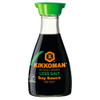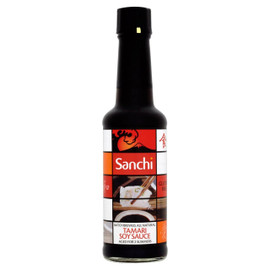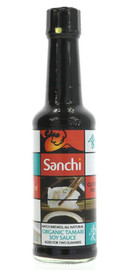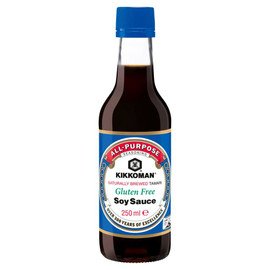43% LESS SALT. 100% FLAVOUR.
Prefer things light on the salt? Then Kikkoman Less Salt Soy Sauce is definitely the right choice. A special process removes almost half of the salt content (43%) from the sauce, making it ideal for those who want to reduce salt intake without sacrificing full flavour.
Kikkoman Less Salt Soy Sauce is in no way inferior to the original: the uniquely full-bodied aroma and umami richness remains intact. It's just as versatile too. A splash is enough to enhance the natural flavour of meat, fish or vegetable dishes. Plus, soups, salad dressings and marinades are also given the perfect finishing touch with our salt-reduced sauce. And this applies not only to Asian dishes but to recipes from all over the world!
Kikkoman Less Salt Soy Sauce has been officially awarded V-label status, meaning it's vegan and vegetarian friendly. Drop by drop or in generous amounts, for seasoning or marinating, soy sauce is an incredibly versatile ingredient. Used correctly it brings a depth of flavour to any dish.
Is soy sauce only suitable for oriental dishes?
Although soy sauce is widely used in oriental dishes, the aromatic flavour of Kikkoman makes it the perfect seasoning for sauces, soups, salad dressings and many other western foods.
What is the difference between light and dark soy sauce?
Chinese soy sauces are available in both light and dark versions. Some are chemically produced and others are partially brewed. Dark soy sauces may contain caramel colouring (E150) and light Chinese soy sauces are often very salty. Kikkoman produces just one soy sauce in Europe because it is suitable for all dishes, even recipes that specify light or dark sauces. The clarity of Kikkoman means it will not discolour clear broths or stocks, and its aromatic qualities work to enhance rather than overpower delicate flavours.
What is the difference between Chinese and Japanese soy sauce?
Most Chinese soy sauce is produced using a much shorter brewing process using little or no wheat and no yeast, as well as having a higher salt content than the Japanese type. Also some Chinese brands are a mixture between a brewed soy sauce and a chemical one.
Ingredients
Water, Soybeans, Wheat, Salt, Spirit vinegar, Sugar.
Allergens in bold
Directions
The amount of soy sauce you use at the table depends on the dish. A dash or two of soy sauce will always add body to the flavour. Our dispenser is perfect for table-top seasoning. Below are some helpful tips
Seasoning your salad: use one dessert spoon of soy sauce for every dessert spoon of oil. You won't need any salt or vinegar, but you can add other seasonings e.g. lemon juice or fresh herbs to adjust the flavour.
While cooking: simply add a few splashes of soy sauce and then adjust the flavour to taste.
For glazing: simply brush on a mixture of soy sauce and honey when it's almost cooked and pop it back in the oven for a few minutes.
Marinating: When you're making your own marinade, use around 3 to 4 tablespoons of soy sauce for each portion (approx. 120 to 150g), plus the other ingredients and seasonings. Just remember that the ratio of soy sauce to other liquid ingredients should be around 2:1.
Store in a cool, dry place and store in the fridge after opening.











